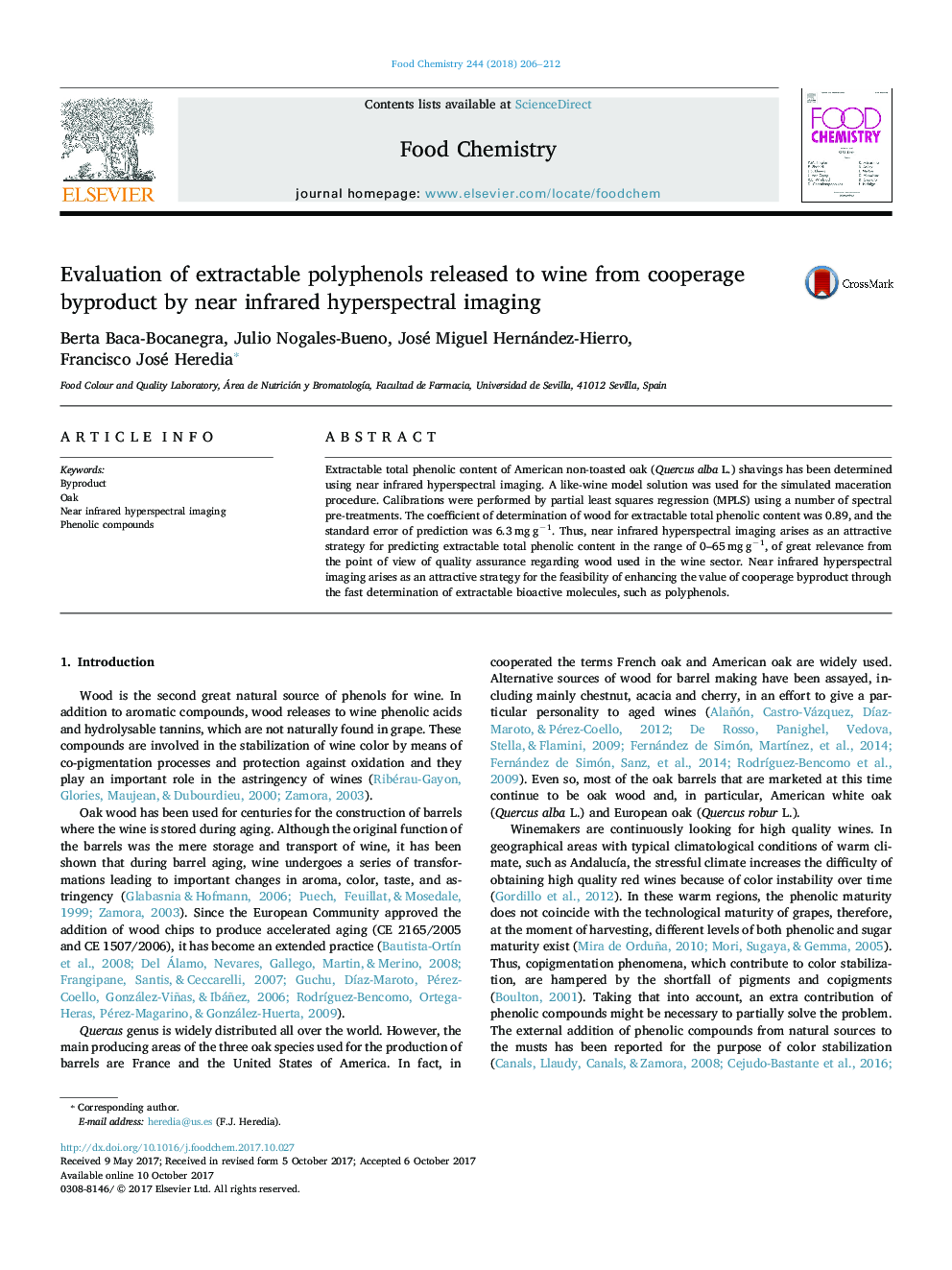| Article ID | Journal | Published Year | Pages | File Type |
|---|---|---|---|---|
| 5132404 | Food Chemistry | 2018 | 7 Pages |
â¢Extractable polyphenols from wood samples, cooperage byproduct, have been studied as copigment for wine.â¢Methodology for recording and processing hyperespectral images has been applied.â¢Calibration model has been developed from reference and hyperespectral data.â¢This model presents a good potential for a fast screening of this parameter.
Extractable total phenolic content of American non-toasted oak (Quercus alba L.) shavings has been determined using near infrared hyperspectral imaging. A like-wine model solution was used for the simulated maceration procedure. Calibrations were performed by partial least squares regression (MPLS) using a number of spectral pre-treatments. The coefficient of determination of wood for extractable total phenolic content was 0.89, and the standard error of prediction was 6.3â¯mgâ¯gâ1. Thus, near infrared hyperspectral imaging arises as an attractive strategy for predicting extractable total phenolic content in the range of 0-65â¯mgâ¯gâ1, of great relevance from the point of view of quality assurance regarding wood used in the wine sector. Near infrared hyperspectral imaging arises as an attractive strategy for the feasibility of enhancing the value of cooperage byproduct through the fast determination of extractable bioactive molecules, such as polyphenols.
